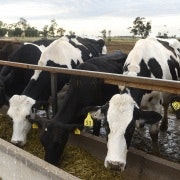Lynas' Chinese gift
A year ago Lynas Corp was a small and struggling would-be miner. Its shares were in freefall and it was about to run out of cash. Today is looks likely to become one of the more strategically important mid-sized miners on the globe.
Lynas owns what is describes as the richest deposit of rare earths in the world at its Mount Weld project in Western Australia. Last year, however, with its shares in freefall towards 20 cents, only $7.5 million in cash and a project development funding task of $550 million, it was under acute pressure.
So acute that it signed a binding deal with the China Non-Ferrous Metal Mining Group which would have given the Chinese state-owned entity 51.6 per cent of its capital in return for about $250 million of equity and a similar amount of China-provided debt.
That deal, however, fell apart when CNMC walked away after the Foreign Investment Review Board insisted that, as well as separating CNMC from all marketing decisions, its shareholding and its level of board representation both had to be below 50 per cent.
Lynas subsequently raised $450 million of equity from the market and its plans to start production in the second half of next year are on track. The Mount Weld concentrate will be processed at Lynas' facility in Malaysia, the first to be built outside China for decades.
China's interest in Lynas was obvious, and strategic. China produces about 97 per cent of the world's rare earth material. Rare earths are used in wide range of products, from water filtration to LCD screens, auto engines to missiles, glass to petroleum refining, batteries to wind turbines. While the market is relatively small (about $US1.4 billion a year) China's dominance of production has unsettled companies and economies that need access to the material.
That anxiety deepened earlier this year when China cut its rare earths export quotas by 72 per cent. The reduction was justified by a desire to ensure domestic supply, put a floor under prices and reduce the environmental damage created by the toxic chemicals used in the processing of rare earths.
The alarm bells are now ringing. On 7 September two Japanese coast guard vessels and a Chinese fishing trawler collided in an area of the East China Sea that Japan controls but China claims sovereignty over. The crew has been released but Japan is still holding the captain, believing he deliberately rammed their boats after being ordered to stop fishing in the disputed waters.
It is the Chinese retaliation that has alarmed not just the Japanese. It has banned exports of rare earths to Japan.
The use of China's dominance of rare earths as negotiating leverage in the non-commercial dispute with Japan will confirm the reservations in the West about the danger of allowing China to retain that dominance.
There were already concerns about the rationale for the cut to export quotas earlier this year, with the cynical interpreting it as an attempt by the Chinese to ensure that its control of their processing was extended to manufacture of the finished products, helping to push its own manufacturing up the value-add chain.
The threat to Japan's industrial base caused the Japanese to start stockpiling reserves. In the US, where the widespread use of rare earths in military applications adds another strategic dimension, there has been talk of subsiding the re-opening of production that was shut down by a combination of low prices and low-cost competition from China a decade ago.
If the export quotas provide motivation for China's customers to look for supply elsewhere, the embargo of exports to Japan adds urgency now that it is clear China is prepared to use its dominance in a geopolitical context.
For Lynas Corp, of course, that can only be good news.
















